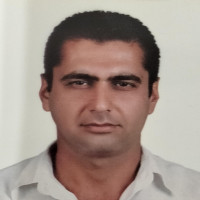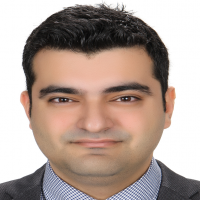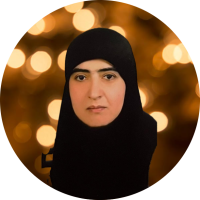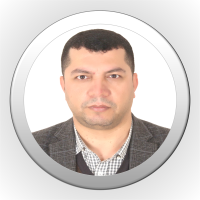Articles
Issue Reviewers


 0000-0003-1327-138X
0000-0003-1327-138X


 0000-0002-0127-4199
0000-0002-0127-4199







Aim & Scope
The International Journal of Materials and Engineering Technology (ISSN:2667-4033; TIJMET) is a peer-reviewed multidisciplinary international open access journal. It publishes reviews, regular research papers (articles) and short communications. In particular, the journal aims to report advanced materials with interesting experimental and theoretical results in as much detail for industrial applications. To ensure a high standard research publication, each manuscript is reviewed by two experts.
TIJMET is to publish basic and applied research, process, high technology and engineering of all sciences, mainly in materials science. All types of engineering materials are considered, and all scales of processing, analysis and design from nano- and micro-scale devices and systems to large structural components. The Journal aims to provide a platform for the publication of original research on all areas of alloys, composites and nano-engineered materials, with emphasis being placed on evaluation and modeling of engineering details and concepts. The content is broad and widely relevant to materials researchers, engineers and designers in academia and in industry. The emphasis is placed on developing both practice and theory relevant to the field of materials engineering and science, with appropriate links established to processing, characterization and simulation.
Basic research papers are welcomed as well as proposals for review articles. Authors are encouraged to discuss the issues relative to application in the short or long-term in various areas, such as aerospace, automotive and other surface transportation, infrastructure, ship-building, off-shore piping, and recreational products.
Topics
Materials characterization
Author Guidelines
TIJMET — Guide for Authors
Introduction
Please read the Aims to gain an overview and assess if your manuscript is suitable for this journal;
Types of Publications
Manuscripts submitted to The International Journal of Materials and Engineering Technology should neither been published before nor be under consideration for publication in another journal. The main article types are as follows:
Manuscript Preparation and Submission
Conflict Decleration
APC
Plagiarism detection
template for proof edition: Microsoft Word template
Introduction
The International Journal of Materials and Engineering Technology (ISSN: 2667-4033; TIJMET) is a peer-reviewed multidisciplinary international open access journal. It publishes reviews, regular research papers (articles) and short communications. In particular, the journal aims to report advanced materials with interesting experimental and theoretical results in as much detail for industrial applications. Manuscripts must be submitted as online at https://dergipark.org.tr/tijmet. A cover letter including a statement of novelty, problem and objective of work and reviewers proposal must be included with each manuscript submission.
Manuscript Submission
The International Journal of Materials and Engineering Technology (TIJMET) has no restrictions on the length of manuscripts, provided that the text is concise and comprehensive. Full experimental details must be provided so that the results can be reproduced. The International Journal of Materials and Engineering Technology requires that authors publish all experimental controls and make full datasets available.
Research Articles: Original research manuscripts. The journal considers all original research manuscripts provided that the work reports scientifically sound experiments and provides a substantial amount of new information. Authors should not unnecessarily divide their work into several related manuscripts, although Short Communications of preliminary, but significant, results will be considered. Quality and impact of the study will be considered during peer review.
Reviews: These provide concise and precise updates on the latest progress made in a given area of research. Systematic reviews should follow the PRISMA guidelines.
Submission Process
Manuscripts for The International Journal of Materials and Engineering Technology should be submitted online at https://dergipark.org.tr/tijmet. The submitting author, who is generally the corresponding author, is responsible for the manuscript during the submission and peer-review process. The submitting author must ensure that all eligible co-authors have been included in the author list and that they have all read and approved the submitted version of the manuscript. To submit your manuscript, register and log in to the submission website. Once you have registered, click here to go to the submission form for The International Journal of Materials and Engineering Technology.
Articles sent for publication are evaluated by national and/or international referees. The final decision about the article is made by the editors.
The names of the referees who evaluate the articles are not disclosed to the authors (blind peer review). It is left to the author's discretion for the referees to evaluate the articles without seeing the author's names (double-blind peer review). Authors who want to use this preference must delete their articles, name and address lines and upload them to the system.
Articles sent to referees are expected to be evaluated within 60 days. If this period is exceeded, the editors appoint a new referee and withdraw the request from the old referee.
The decision to accept or reject the article is made by the editors. In line with the recommendations of the referees, a major (re-submit for evaluation) or minor (correction required) revision decision is made for the articles that are not deemed sufficient. Articles that do not reach the desired level and are not deemed scientifically sufficient are rejected.
Accepted File Formats
Authors must use the Microsoft Word template to prepare their manuscript. Using the template file will substantially shorten the time to complete copy-editing and publication of accepted manuscripts. Accepted file formats are:
Microsoft Word: Manuscripts prepared in Microsoft Word must be converted into a single file before submission. When preparing manuscripts in Microsoft Word, the The International Journal of Materials and Engineering Technology Microsoft Word template file must be used. Please insert your graphics (schemes, figures, etc.) in the main text after the paragraph of its first citation.
Cover Letter
A cover letter must be included with each manuscript submission. It should be concise and explain why the content of the paper is significant, placing the findings in the context of existing work and why it fits the scope of the journal. Confirm that neither the manuscript nor any parts of its content are currently under consideration or published in another journal. Any prior submissions of the manuscript to the journals must be acknowledged. The names of proposed and excluded reviewers should be provided in the submission system, not in the cover letter.
Manuscript Preparation
General Considerations
Research manuscripts should comprise:
Front matter: Title, Author list, Affiliations, Abstract, Keywords
Research manuscript sections: Introduction, Materials and Methods, Results, Discussion, Conclusions.
Back matter: Supplementary Materials, Acknowledgments, Author Contributions, Conflicts of Interest, References.
Review manuscripts should comprise the front matter, literature review sections and the back matter. The template file can also be used to prepare the front and back matter of your review manuscript. It is not necessary to follow the remaining structure.
Abbreviations should be defined in parentheses the first time they appear in the abstract, main text, and in figure or table captions and used consistently thereafter.
SI Units (International System of Units) should be used. Imperial, US customary and other units should be converted to SI units whenever possible
Equations: If you are using Word, please use either the Microsoft Equation Editor or the MathType add-on. Equations should be editable by the editorial office and not appear in a picture format.
Front Matter
These sections should appear in all manuscript types
Title: The title of your manuscript should be concise, specific and relevant. It should identify if the study reports trial data, or is a systematic review, meta-analysis or replication study.
Author List and Affiliations: Authors' full first and last names must be provided. The initials of any middle names can be added. The standard format is used for affiliations: complete address information including city, zip code, state/province, country, and all email addresses. At least one author should be designated as corresponding author, and his or her email address and other details should be included at the end of the affiliation section.
Abstract: The abstract should be a total of about 200 words maximum. The abstract should be a single paragraph and should follow the style of structured abstracts, but without headings: 1) Background: Place the question addressed in a broad context and highlight the purpose of the study; 2) Methods: Describe briefly the main methods or treatments applied. Include any relevant preregistration numbers, and species and strains of any animals used. 3) Results: Summarize the article's main findings; and 4) Conclusion: Indicate the main conclusions or interpretations. The abstract should be an objective representation of the article: it must not contain results which are not presented and substantiated in the main text and should not exaggerate the main conclusions.
Keywords: Three to ten pertinent keywords need to be added after the abstract. We recommend that the keywords are specific to the article, yet reasonably common within the subject discipline.
Research Manuscript Sections
Introduction: The introduction should briefly place the study in a broad context and highlight why it is important. It should define the purpose of the work and its significance, including specific hypotheses being tested. The current state of the research field should be reviewed carefully and key publications cited. Please highlight controversial and diverging hypotheses when necessary. Finally, briefly mention the main aim of the work and highlight the main conclusions. Keep the introduction comprehensible to scientists working outside the topic of the paper.
Materials and Methods: They should be described with sufficient detail to allow others to replicate and build on published results. New methods and protocols should be described in detail while well-established methods can be briefly described and appropriately cited. Give the name and version of any software used and make clear whether computer code used is available. Include any pre-registration codes.
Results: Provide a concise and precise description of the experimental results, their interpretation as well as the experimental conclusions that can be drawn.
Discussion: Authors should discuss the results and how they can be interpreted in perspective of previous studies and of the working hypotheses. The findings and their implications should be discussed in the broadest context possible and limitations of the work highlighted. Future research directions may also be mentioned. This section may be combined with Results.
Conclusions: This section is not mandatory, but can be added to the manuscript if the discussion is unusually long or complex.
Patents: This section is not mandatory, but may be added if there are patents resulting from the work reported in this manuscript.
Acknowledgments: All sources of funding of the study should be disclosed. Clearly indicate grants that you have received in support of your research work.
Conflicts of Interest: Authors must identify and declare any personal circumstances or interest that may be perceived as inappropriately influencing the representation or interpretation of reported research results. If there is no conflict of interest, please state "The authors declare no conflict of interest." Any role of the funding sponsors in the design of the study; in the collection, analyses or interpretation of data; in the writing of the manuscript, or in the decision to publish the results must be declared in this section. If there is no role, please state “The founding sponsors had no role in the design of the study; in the collection, analyses, or interpretation of data; in the writing of the manuscript, and in the decision to publish the results”.
References: References must be numbered in order of appearance in the text (including table captions and figure legends) and listed individually at the end of the manuscript. We recommend preparing the references with a bibliography software package, such as EndNote, Reference Manager or Zotero to avoid typing mistakes and duplicated references. We encourage citations to data, computer code and other citable research material. Include the digital object identifier (DOI) for all references where available. If available online, you may use reference style below.
Citations and References in Supplementary files are permitted provided that they also appear in the main text and in the reference list.
In the text, reference numbers should be placed in square brackets [ ], and placed before the punctuation; for example [1], [1–3] or [1,3]. For embedded citations in the text with pagination, use both parentheses and brackets to indicate the reference number and page numbers; for example [5] (p. 10). or [6] (pp. 101–105).
Preparing Figures, Schemes and Tables
File for Figures and schemes must be provided during submission in a single zip archive and at a sufficiently high resolution (minimum 1000 pixels width/height, or a resolution of 300 dpi or higher). Common formats are accepted, however, TIFF, JPEG, EPS and PDF are preferred.
The journal can publish multimedia files in articles or as supplementary materials.
All Figures, Schemes and Tables should be inserted into the main text close to their first citation and must be numbered following their number of appearance (Figure 1, Scheme I, Figure 2, Scheme II, Table 1, etc.).
All Figures, Schemes and Tables should have a short explanatory title and caption.
All table columns should have an explanatory heading. Authors should use the Table option of Microsoft Word to create tables
Ethical Principles and Publication Policy
1. Publication Ethics and Policies
1.1 Publication Ethics
These principles reflect our journal's commitment to maintaining high ethical standards in scientific research and publication processes. It is the responsibility of authors, reviewers, and editors to adhere to these principles.
Price Policy
TIJMET doesn’t have Article Processing Charge (APC) or any submission charges.

